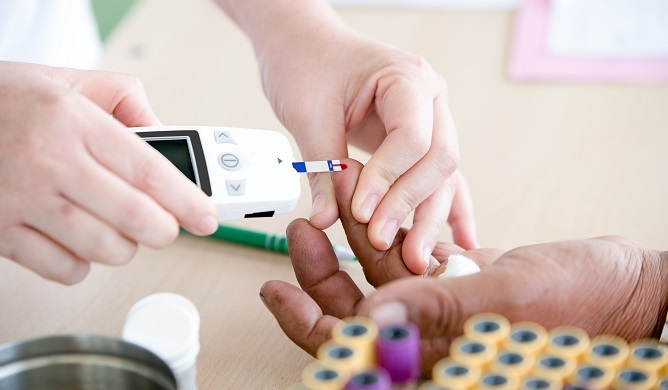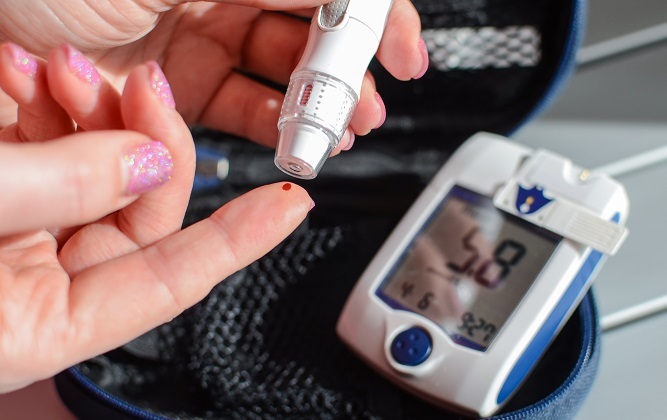
 Data Structure
Data Structure Networking
Networking RDBMS
RDBMS Operating System
Operating System Java
Java MS Excel
MS Excel iOS
iOS HTML
HTML CSS
CSS Android
Android Python
Python C Programming
C Programming C++
C++ C#
C# MongoDB
MongoDB MySQL
MySQL Javascript
Javascript PHP
PHP
- Selected Reading
- UPSC IAS Exams Notes
- Developer's Best Practices
- Questions and Answers
- Effective Resume Writing
- HR Interview Questions
- Computer Glossary
- Who is Who
What is the full form of DM?
Introduction
Diabetes Mellitus (DM) is a metabolic disorder and the pancreas fails to produce or utilise insulin. Insulin is necessary to convert glucose, carbs, and other foods into the energy one can need to function each day. Diabetes mellitus is one of the most prevalent and dangerous chronic diseases in the US.

Adult vision loss, kidney failure atrophy, and nontraumatic lower-extremity amputations are all most commonly caused by diabetes. People with diabetes are 2-4 times more likely than people to have coronary heart disease and stroke.
Types of DM
Type 1 diabetes
It is a severe autoimmune condition that causes insulin resistance due to the destruction of pancreatic beta cells. Insulin is an essential hormone that aids in converting glucose into energy in the bloodstream.
Insulin and type 1 diabetes
When a meal is completely assimilated, the digestive system utilises carbohydrates and breakdown into glucose in the bloodstream. Moreover, the body cells use this glucose as energy to carry out all functions.
Insulin acts as a key for the entry of glucose into the cells. Therefore, the inadequate level of insulin causes the accumulation of glucose in the blood that leads to an increase in blood sugar, then the symptoms have developed.
The majority of type 1 diabetes cases are kids or teenagers, while about 20% of those with the condition are adults and approximately 5 to 10 percent of diabetes patients have type 1 diabetes.
Type 2 diabetes
Type 2 diabetes is considerably more prevalent as compared to type 1 diabetes. It occurs when the pancreas does not produce sufficient insulin or the body cannot utilise it.
Insulin and type 2 diabetes
When insulin is resistant, the body fails to respond to insulin, therefore, it prevents it from absorbing and utilisation of glucose from the food. This causes the sugar to remain in the blood, therefore, it may potentially result in a chronic illness.
However, type 2 diabetes is reversible if detected and treated at an early stage, and several of the symptoms and problems can be avoided.
This kind can appear at any age, however, it's more prevalent in people over 40 and 90-95% of diabetic patients have type 2 diabetes.
Gestational diabetes
A hereditary illness like myotonic dystrophy, a medicine like glucocorticoids, or a secondary ailment like pancreatic disease may all be associated with the development of diabetes mellitus. Blood glucose levels rise throughout pregnancy but often return to normal post-delivery. However, type 2 diabetes is known to increase the risk of gestational diabetes.
Symptoms of DM
Type 1 diabetes symptoms might appear suddenly, within a few weeks. Type 2 diabetes symptoms can appear gradually over years and can be so subtle that may fail to be identified.
Some of the symptoms of diabetes include
Increased thirst and urination
Increased appetite
Tiredness
Blurred vision
numbness or tingling in the feet or hands
Wounds remain unhealed
Sudden weight loss
Diagnosis
A doctor will ask about the medical history of a person and practise a physical checkup to identify the symptoms of high blood sugar levels and diabetes.
The following tests that assess blood glucose levels are usually performed to diagnose diabetes
Test of Fasting Plasma Glucose
This is the procedure that doctors use to identify both type 1 and type 2 diabetes. Before this quick test, in which blood is obtained to measure blood sugar levels, a person must go without eating or drinking for a minimum of eight hours. If the fasting blood sugar levels are 126 milligrams per deciliter or greater on two different days, then he will be given a diabetes diagnosis.

Other tests
Diabetes may also be identified based on signs of the condition and a surprisingly high glucose level of 200 mg/dl. The standard test for diabetes mellitus is an oral glucose tolerance test, which is recommended by a doctor. .
Treatment of DM
Type 1
Insulin injections or the usage of an insulin pump, periodic blood sugar monitoring, and carbohydrate tracking are all included in the treatment for type 1 diabetes.
Type 2
The fundamental elements of type 2 diabetes treatment include dietary adjustments, blood glucose monitoring, oral diabetic medications, insulin, or a combination of both, and lifestyle modifications.
An islet cell or pancreas transplantation could be a choice for certain persons with type 1 diabetes.
Gestational diabetes
The tracking of the unborn child's health depends on managing blood sugar control or preventing gestational diabetes. The testing of blood sugar levels may be part of the gestational diabetes treatment plan that may along with maintaining a nutritious diet and frequent exercise.
The use of oral medicines or insulin in some circumstances is also recommended.
Conclusion
Diabetes is a common endocrine disorder and is characterised by high blood glucose. The cells in the body efficiently work when blood sugar levels are at a specific level. A person may normally experience discomfort if the level of sugar in the blood fluctuates too much or too little. Diabetes can be three types- type 1, type 2, and gestational diabetes. The symptoms are increased thirst, appetite, frequent urination, non-healing wounds, etc. It can be controlled by taking oral medicines, insulin, and lifestyle modifications.
FAQs
Q1.How do we confirm diabetes?
The fasting blood sugar test is the measure of blood glucose level upon overnight fasting. Fasting blood sugar levels of 99 mg/dL or less are considered normal and 126 mg/dL or above are considered to be diabetes.
Q2.Difference between type 1 and type 2 diabetes.
Type 1 |
Type 2 |
|---|---|
Men and women are equally affected |
Women are affected more than men |
Commonly begins before age 20, but can occur in adults |
Commonly begins after age 40, but can occur before 40 |
Insufficient or no insulin production |
Insulin cannot be properly utilised by the body |
Some hereditary tendency |
Strong hereditary tendency |
Q3.What are the risks of diabetes?
Cardiovascular disease, persistent kidney disease, nerve damage, as well as issues with the foot, oral health, hearing, eyesight, and mental health are typical diabetes issues.

